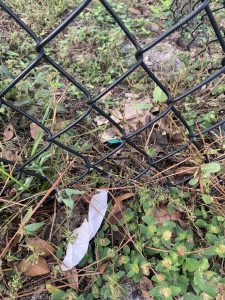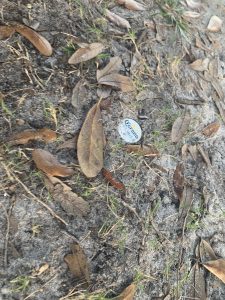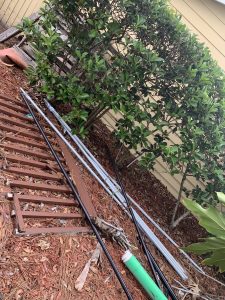One Man’s Trash
By: Brynn Miller
For this project, I turned to me best friend, 18 year old Natasha James (she/her). James and I have known each other for years through our high school volleyball team, and have been close since then. James is going to school to become a Forensic Pathologist, and hopes to be able to make a difference in the future.
CONSENT FORM
I, Natasha James, am hereby giving my full consent For the UCF (University of
Central Florida) student, Brynn Miller, to use any of my documents, photographs, and
recordings accumulated and created for the purpose of her PhotoVoice assignment within the
course Humanities 2020.
These materials may be publicly viewed within the class in order to be critically assessed and
graded by her professor.
Such materials may also be distributed amongst classmates/peers and via Pressbooks if the
assignment asks for such
evaluation. Further inquiries into said materials can be answered by me through the contact
information displayed below.
By signing below, I hereby give my full consent,
_______________________________ _________________
Signature
Date. 11/13/2023
Email: nnbrown562005@gmail.com

For me this picture represents how closely our trash can resemble the environment. There are brown tissues that blend in with the leafs and ground that could be ingested by animals. These also don’t disintegrate fast or produce any healthy benefits to the ground they are on.

The single beer bottle cap demonstrates how no matter how tiny or simple something could be thrown away, it ends in the middle of the environment. The bottle cap could be easily mistaken as edible to animals, thus creating a hazard to the fauna in the area. The picture shows the disregard humans have for the health of our planet. Even if the bottle cap is small, the amount of time it would take for it to disintegrate is long and when it does decompose, the chemicals it would release would be bad for our environment.

In this picture, the discarded fences and poles show how humanity is treating our environment as a dumping place. In areas where trees and flora could grow, trash is thrown to the side like it’s nothing. It impedes cleanliness and hides the true beauty a simple bush could have. The discarded items become a welcome signs for other people to throw away their trash such as poles, cardboard, etc, creating a bigger mess. This picture shows the start of the uncleanliness of our environment due to humans disrespect.
Authors Notes:
In the first image James took, I originally had trouble seeing the brown napkin hidden within the grass. This proves the point she was making in her summary, as she mentioned how trash can closely resemble organic matter, which can end upon confusing animals and potentially causing death due to them ingesting unnatural material. We hear a lot about sea turtles getting plastic bags stuck in their stomach since the bags closely resemble jellyfish, their natural food source, but there are so many other species that are threatened by trash.
In her second image, James highlights the idea that even the smallest pieces of trash can be detrimental to nature. I believe she chose to show this part because people tend to overlook the idea that something so small and seemingly insignificant can cause so much damage. This could also go for cigarettes, as many people discard them into roads and waterways because they are small and it’s much easier to toss them wherever than to carry them to a trash can. In reality, this is just a chain reaction waiting to occur, because if someone sees trash already thrown about, they’re more likely to add to the pile then if the ground was clean.
In her third image, James shows the effects that carelessly throwing things that aren’t necessarily trash can have on nature. She mentions how the poles and fencing thrown about hide the true beauty that the bush could have. This could also be the same situation for buildings. New constructions have demolished the forests and fields that were once home to wildlife of all sorts, and this has hindered the health of the environment. These buildings cover up the beauty that nature had with pads of concrete. James highlights this to show readers the ways that humans are disrespecting the environment, which can ultimately cause the destruction of our ecosystems.
Main Theme: Negative Human Impacts on the Environment
Similarly to the poem by Prince Ea, titled “MAN vs EARTH”, James discussed the impacts of human touch on the environment around us. In his poem, Ea discusses that compared to the amount of time the earth has been around, humans have walked on it for 3 seconds. Within those 3 seconds we have destroyed so much of our beloved planet. He mentions, “We have increased the extinction rate of animals by 1,000 times the normal rate.” James talks about the problems with trash that blends in with the environment, as animals may mistake it for food and get sick, which goes along with what was mentioned in the reading. The poem adds more intel into this situation, as the human race has made it so that within the next 10-100 years, a majority of all animals will be extinct. As Prince Ea states, “These problems are symptoms of us.”
Media Attributions
- Private: IMG_5376 © Natasha James
- IMG_5363
- IMG_5377

